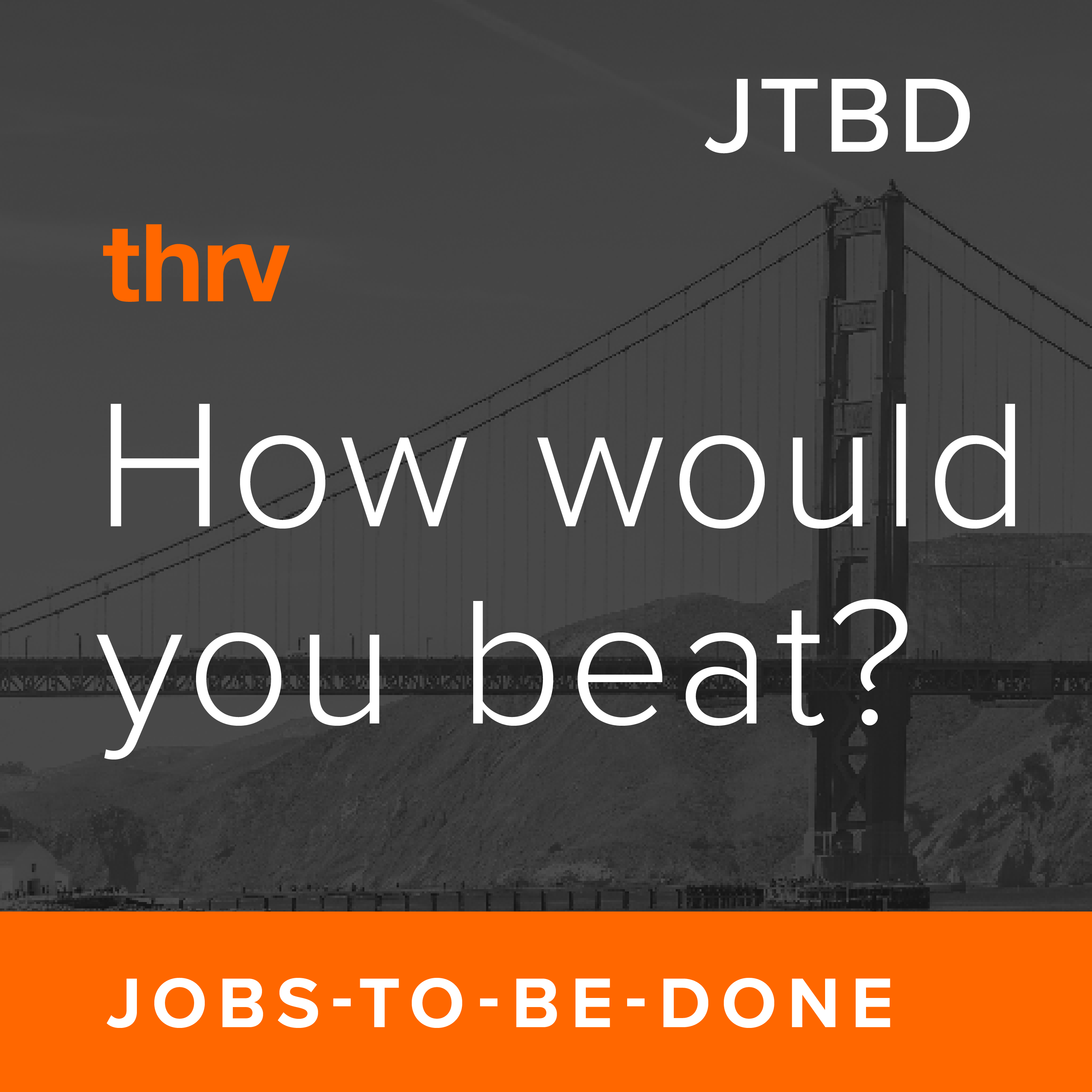November 30, 2020
Jobs-to-be-Done Exercises to Uncover Your Customers’ Jobs

According to Jobs Theory, your customers are not buying your products, they are hiring them to get a job done. Jobs to be done are goals that your customers are trying to achieve independent of any product or solution. Their struggle with achieving this goal causes them to purchase new solutions. In other words, the goal of building new products is to satisfy customer needs better than competitors in your market.
There are countless examples of companies that not only failed, but missed enormous opportunities trying to satisfy customer needs better for their products rather than satisfy customer needs better in the job.
The key question then is, how do you figure out what your customer’s job is?
3 Jobs-to-be-Done Exercises
Here are 3 jobs-to-be-done exercises your team can do to uncover your customers' job-to-be-done:
1. Draw on your personal experience. Ask yourself what goal you’re trying to achieve when you use your own product. This is especially effective in consumer markets where it’s likely that you have had an experience similar to that of your customers, and also in B2B markets where you’ve once held the role your customers hold (e.g. your customer is a marketer and you once had a marketing job).
For example, perhaps your product is a CRM and your customer is a salesperson. If you’ve been a salesperson in your career, you can ask yourself, “Why did I use a CRM? What was my goal?” Because you’ve had a similar experience to your customer, you are likely to get pretty close to understanding their job-to-be-done by drawing on your own personal experience. Many startups are successful because the founder had experience trying to get a job done, got frustrated when it didn’t go well or took too long to do, and came up with an idea to solve their own problem. Because the founder had walked in their customer’s shoes, they understood the job and the unmet needs well, and it so happened that lots of other people had the same unmet needs.
Before you do any research, ask yourself what you would want your product to help you do even if your product never existed. Even if you and your team don’t get to an answer you all agree on, it will give you a good hypothesis with which to kick off your research.
2. Ask your teammates who have had the same experience as your customers or have spent a lot of time with your customers and know them well. Perhaps you haven’t had experience walking in your customers shoes but your teammates have.
Let’s take the CRM example again. Maybe you’ve been a Product Manager your whole career but you have salespeople at your company. Ask them, “Why do you use a CRM? What goal would you be trying to achieve even if the CRM didn’t exist?” Perhaps your colleague says, “Because my manager makes me.” Here it can be useful to use the 5 Whys. Ask why until you get to an answer that doesn’t include a mandate from a manager or another product or technology. You’re looking for the salesperson’s underlying goal.
3. Interview your customers. When you or your colleagues don’t have the same set of experiences as your customers or, even with similar experiences as your customers, you can’t all agree on the job-to-be-done, it’s time to interview your customers. Start with people who use your product and expand your interview set to include people in the same position who likely have similar goals but don’t yet use your product.
Conducting a JTBD Interview
Here’s a brief interview guide for identifying a job-to-be-done.
Start by letting the interview participants know how valuable their input is, that you are conducting the interview to understand why they are using your product or service, and what their key goals are. Initially you want to ask, “Why do you use our product or service?”

Don’t settle for the customer describing attributes of the product they like. Ask “why” until you get to the key goal they are trying to achieve in their personal or professional life. Make sure their goal doesn’t include your product or another product.
These are a few helpful prompts that’ll keep your interview on the right track:
- “Do you ever wake up in the morning thinking, ‘I need to use this product today.’ If so, why? What do you need to get done?”
- “What would cause you to ‘fire’ our product/service? What failures are unacceptable?”
If the interviewee’s goal is professional (related to their work):
- “What would get you fired from your job if you failed at achieving it?”
- “What would get you a bonus if you succeeded at it wildly?”
When you hear the respondent explain a goal that is independent of your product, phrase it as an action verb plus an object and confirm that this is their goal. Here you are trying to confirm that you have the language correct.
Follow-Up Questions
Once you’ve identified one or more JTBDs, ask these follow-up questions to better understand, and clarify, their goals:
- How do you measure your progress towards [JTBD]?
- How successful is your company at achieving [JTBD]?
- Do you spend money today in your attempt to achieve [JTBD]? What do you spend money on?
- What are the key obstacles you face in achieving [JTBD]?
- Are you currently looking for new solutions to help you achieve [JTBD]?
- Is there anything particularly slow, time-consuming or frustrating about achieving [JTBD]?
No matter which exercise you use to identify your customers' job-to-be-done, at the end of the day, make sure you’ve identified a clear goal with an action verb, a direct object, and no solutions in the statement. To learn more about what makes a great job statement, read, “How to Answer the Question, ‘What’s the Job-to-be-Done?’”.
Posted by Jay Haynes View all Posts by Jay Haynes





